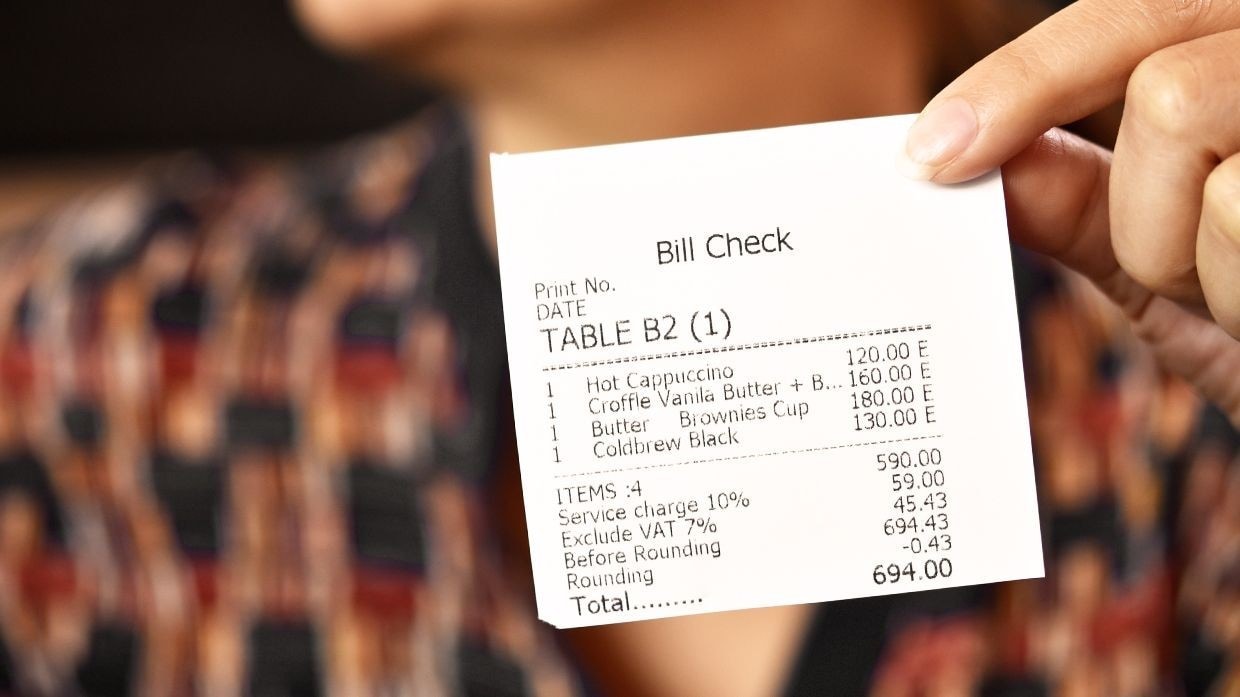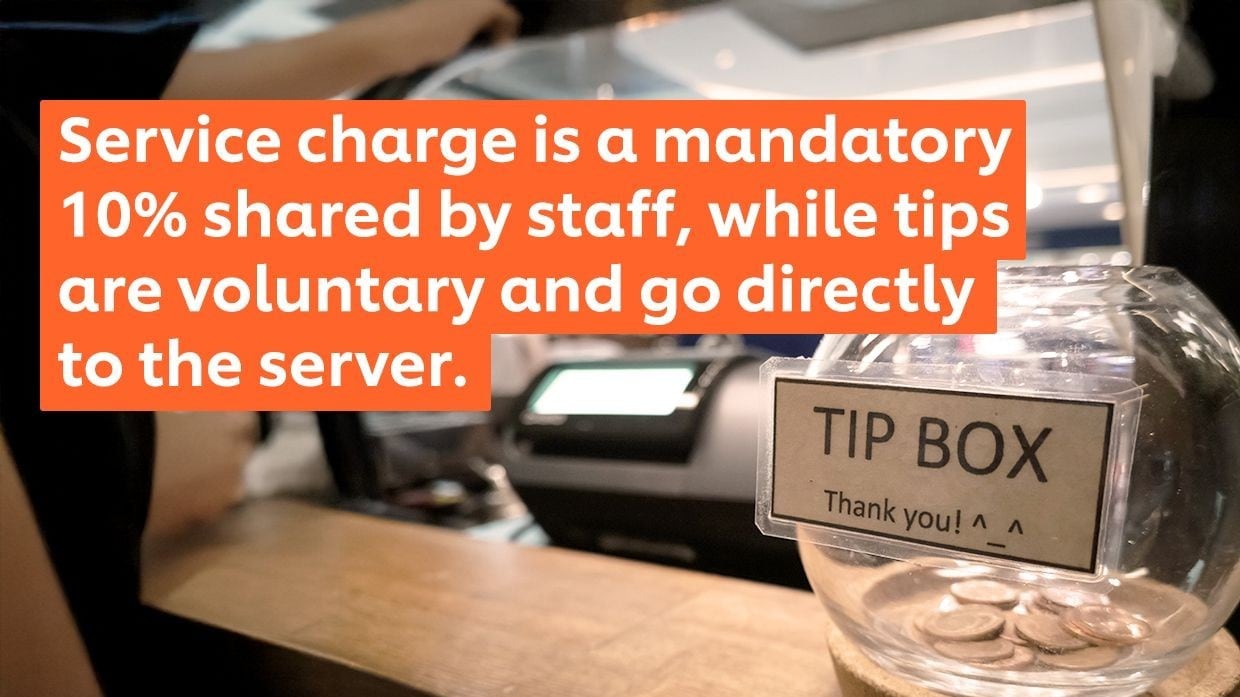Has the service charge law ever left you puzzled? Maybe a customer questioned the fee on their bill and you weren’t sure how to explain it. Perhaps a staff member asked for a bigger share, or a workplace clash started over how it was divided. Moments like these can quickly turn tense if you don’t fully understand the rules.
In this guide, you’ll discover exactly who gets the service charge, how to compute it, and the proper way to share it. You’ll also find clear answers to common questions so you can comply with the law and run a smoother operation. Along the way, we’ll cover how to distribute service charge to employees fairly so everyone understands the process.
What Is Service Charge?

Service charge is an additional fee that businesses add on top of the cost of food, beverages, or services. It applies whether a customer orders a full meal, a single dessert, or even just a drink. The fee is meant to reward staff who serve customers and keep operations running smoothly.
In food and hospitality, “service” covers the work involved in delivering a good dining experience. This includes greeting guests, taking orders, preparing and serving food, cleaning tables, refilling drinks, and handling requests. While these tasks are part of a staff member’s job, the service charge provides extra earnings that supplement their base pay, acknowledging the direct role they play in customer satisfaction.
What Is the Service Charge Law in the Philippines?
Because service charges involve extra pay for staff, the Philippine government regulates how they are distributed. The service charge law requires that 100% of service charges collected by hotels, restaurants, and similar establishments go directly to eligible employees.
This rule is set under Republic Act No. 11360, which amended Article 96 of the Labor Code on August 7, 2019. The law states: “All service charges collected by hotels, restaurants and similar establishments shall be distributed completely and equally among the covered workers except managerial employees.”
Unlike charges with fixed rates under the law, such as the minimum wage or value-added tax, the service charge percentage in the Philippines is not mandated. Many businesses follow the industry norm of 10%, but they may set it higher or lower depending on company policy. Whatever the rate, it is always added on top of the customer’s bill.
Before this amendment, management could keep 85% of collected service charges and give only 15% to staff. Now, all service charges go to the employees, ensuring they are fairly rewarded for their contribution to efficient business operations.
Who Receives the Service Charge?

Under the service charge law, all rank-and-file and supervisory employees who directly contribute to operations are entitled to a share of the service charge. This includes waitstaff, cooks, bartenders, cashiers, dishwashers, cleaning staff, and supervisors who are actively involved in day-to-day service. Probationary and part-time employees also qualify, as long as their work directly supports the business’s operations.
Managerial staff are excluded from the distribution. In small- and medium-sized food businesses, this refers to owners or managers whose main focus is running the overall business, handling finances, planning menus, managing suppliers, and making operational decisions.
For example, in a small café, all baristas, cooks, and service staff would receive equal or proportional shares based on the agreed distribution method. In a hotel restaurant, the service charge would only be divided among the restaurant’s staff, not the entire hotel workforce.
How to Distribute Service Charge to Employees
The service charge law does not prescribe guidelines for distribution. However, it requires companies to allocate shares in proportion to each employee’s basic wage unless both sides agree on a different method.
Here is a common approach food businesses in the Philippines use:
- Pool the total service charge collected in a month.
- Calculate the total basic pay of all eligible employees.
- Determine each employee’s share by dividing their basic pay by the total salary pool.
- Multiply that ratio by the total service charge collected. The amount should appear as a separate item in each employee’s payslip for transparency.
Examples of service charge computation in the Philippines
Example 1: Small Restaurant (Equal Salaries)
- Service charge collected: ₱20,000
- Staff: 5 employees, each earning ₱15,000 monthly
- Equal salaries mean equal shares: ₱4,000 per employee.
Example 2: Casual Dining Restaurant (Different Salaries)
- Service charge collected: ₱50,000
- Staff:
- 2 supervisors earning ₱20,000 each
- 6 crew earning ₱15,000 each - Total basic pay: ₱140,000
- Supervisor share: (₱20,000 ÷ ₱140,000) × ₱50,000 = ₱7,142.86 each
- Crew share: (₱15,000 ÷ ₱140,000) × ₱50,000 = ₱5,357.14 each
What Are the Service Charge Law Implementing Rules and Regulations?

The Department of Labor and Employment (DOLE] first issued the service charge law implementing rules and regulations under Department Order No. 206, series of 2019. It later updated them through Department Order No. 242, series of 2024, which took effect on February 1, 2024. These updates clarified coverage, payout frequency, and how distribution should work in real business settings.
Key points from the IRRs:
- Who is covered: All non-managerial employees, whether regular, probationary, contractual, or hired through an agency.
- Who is excluded: Managerial employees, defined as those with authority to hire, discipline, transfer, or set business policies.
- How often to pay: Distribute service charges at least every two weeks, with no gap longer than 16 days.
- How to divide: Base the amount each employee gets on their actual hours or days worked during the pay period.
- No reduction of benefits: Businesses cannot lower existing employee benefits when applying these rules.
- How to handle disputes: Resolve disagreements internally first, and if unresolved, bring them to DOLE for conciliation under the Single-Entry Approach (SENA).
Does Service Charge Replace Tips?

No, service charge and tips are not the same. Service charge is usually set at around 10% of the customer’s total bill. It is mandatory once applied and shared among all eligible staff. Meanwhile, tips are voluntary. Customers give them directly to staff as a personal token.
In most cases, tips belong entirely to the recipient. However, some businesses have a pooling policy where all tips are collected and then divided among staff. This is common in places where several employees work together to serve each table, like larger restaurants or hotels.
For example, if a diner leaves a ₱100 tip on top of a bill with a service charge, that tip goes to the server directly. If the business has a pooling arrangement, the tip will be combined with others and shared according to the agreed method.
Frequently Asked Questions (FAQs) About the Service Charge Law
Here are some common questions from business owners about the service charge law in the Philippines.
Is the service charge mandatory in the Philippines?
No, businesses can choose not to impose a service charge. However, if they do, they must follow the rules under RA 11360.
What happens if my restaurant does not comply?
You could face DOLE investigations, fines, and employee complaints.
Does service charge apply to catering services?
Yes, if a catering company imposes a service charge, it must follow the law.
Can I use part of the service charge for business expenses?
No, 100% of the amount must go to employees covered by the law.
How should service charge appear on the payslip?
It should appear as a separate line item labeled “Service Charge Distribution” or similar.
Complying with the service charge law shows you value your team and the quality of service they deliver. Fair payouts inspire loyalty and boost morale, leading to better service. And when service improves, customers return, spend more, and help keep your business thriving. Stay up to date with the latest rules to protect your staff’s rights and keep your business strong for years to come.












